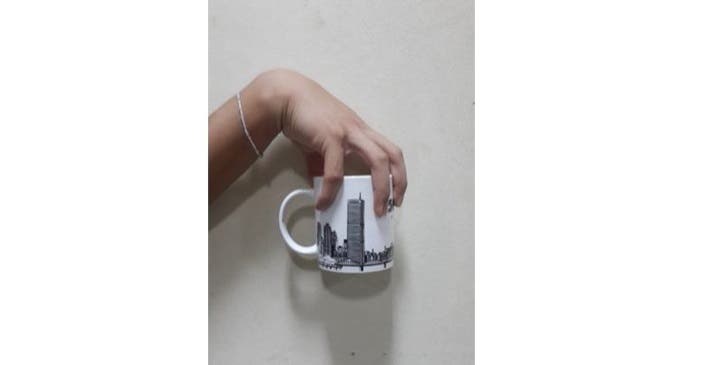
There’s nothing like spilling coffee on the rug or your clothes. Best mornings ever, right? Most of the time, this happens when you try to get to your coffee table or workbench from the espresso machine and all that motion causes the black gold to wobble and eventually spill out. But apparently, you can minimize the chance of this happening merely by holding the mug in the correct position, one bored physicist claims.
“Rarely do we manage to carry coffee around without spilling it once,” Jiwon Han, a South Korean physicist, wrote in his study. “In fact, due to the very commonness of the phenomenon, we tend to dismiss questioning it beyond simply exclaiming: ‘Jenkins! You have too much coffee in your cup!’ ”
Han first illustrates his point by showing what happens when you pour coffee into a wine glass and a typical cylindrical coffee mug. Simulating motion at a frequency of 2Hz with a mechanical vibrator connected to a function generator, he demonstrated that the motion inside the wine glass is aggressive while that of the cylindrical cup is comparatively steady. When the frequency of motion was doubled to simulate human motion, the reverse held true. This tells us that spilling coffee is, in fact, a manifestation of multiple interactions from body-hand coordination on the resonance properties of the cup-coffee interaction.
When we hold a cup, the container is synchronized with the hand’s motion, which in turn is in tune with the rest of the body’s movements. For instance, the hand’s swaying motion is dictated by our lower body’s “up and down” movements. However, by keeping the hand in a specific position you can alter its motion in relation to the body.
Han investigated two scenarios to assess spillage. First, he looked at how body locomotion can influence the outcome. Surprisingly, walking backwards significantly changes the frequency characteristics of our hand motion and helps prevent spillage. This is perhaps due to the fact that we’re not used to walking backwards so the motion becomes irregular and the body starts to heavily rely on sideways swinging motion in order to keep balance. Then again, walking backwards is kind of impractical.
In the second scenario, Han assessed how two mug-holding positions influence spillage. The two studied modes are “normal”, which involves holding the mug by the handle, and the “claw-hand posture”, which requires your hand flexed in an arcade-style mechanical arm fashion.
The modeling suggests holding the mug by the handle inflicts a frequency motion of 4 HZ, while the claw-hand’s frequency was lower than 2 Hz. So, the latter option will significantly prevent spillage, Han claims. That or walking backwards. How about walking backwards with the mug flexed in a claw?
Han didn’t try that, but my intuition tells me this could end either brilliantly or catastrophically.






